Home schooling is the new norm. Scholarships are uncertain. Plus, you really really want to finally buckle down on learning that new language while stuck at home.
Education is on a lot of people’s minds right now, and effectively reaching those people as a marketer and building effective advertising campaigns means empathizing with their current situation, but also their curiosity about how education will change.
They’re the simplest, yet hardest questions to answer:
- What are my consumers currently interested in, curious about, or concerned about?
- How can I be valuable while aligning myself with those interests, curiosities or concerns?
Especially in today’s world, a lot of this can be answered based on their content consumption habits online. Using data from our network of 20,000 publishers, advertisers and digital properties, we’ve surfaced some revealing trends about education consumers, including their current interests, when and how to reach them online, and creative strategies to support you in building an effective advertising campaign.
As a whole, education itself is having a moment—we’ve seen a 51% increase in pageviews on publisher sites over the last 45 days, posing a big opportunity for advertisers to reach those audiences while they’re engaged.
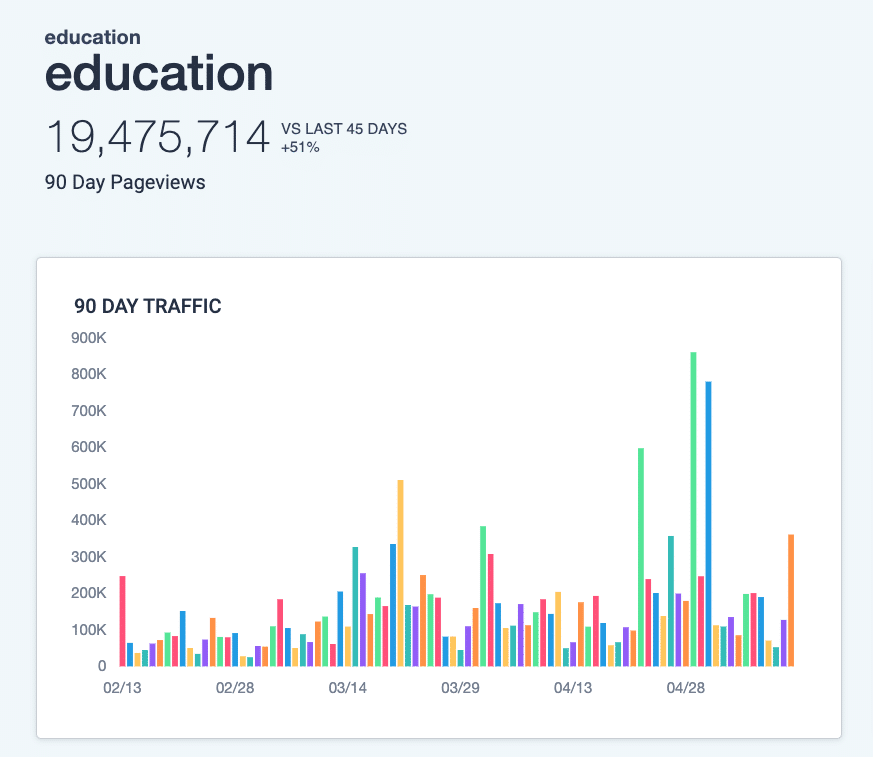
But education vertical is a wide umbrella—we’s split our insights between primary education, higher education and self-learning & professional development to zero in on the specifics of consumer needs.
Education Benchmark Report
Primary Education: Special Education Fallout
Under the Federal Individuals With Disabilities Education Act (IDEA), U.S. schools are supposed to provide equitable education, or none at all. In the wake of Coronavirus, this has left many students in need without one-on-one aides, speech and physical therapy, and in some cases, it’s caused schools to make the tough decision to not provide distanced learning to any chid.
When it comes to primary education, it’s the focal point of a spike in readership in the education category.
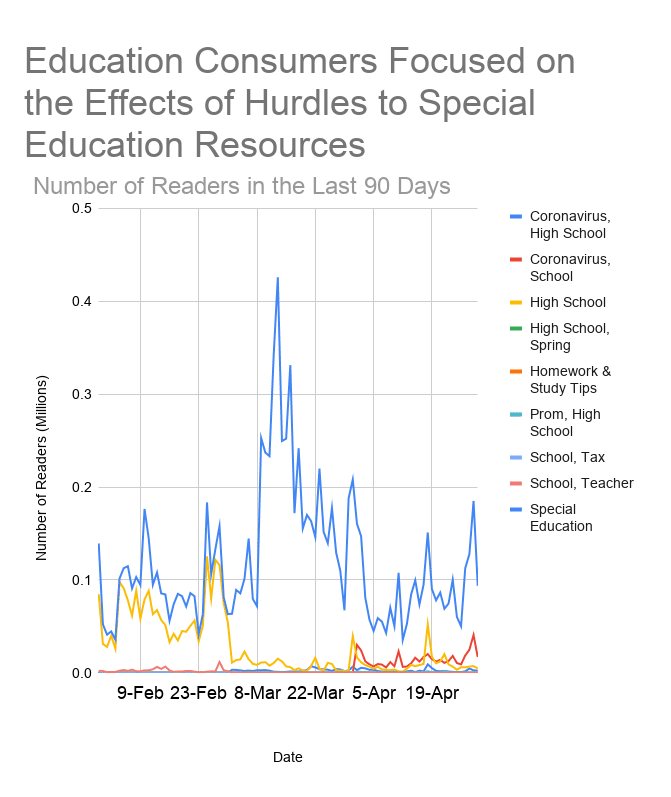
Directly following trends in special education is trends in Coronavirus’s effect on high schoolers. Proms and graduations are cancelled, sports scholarships are on hold, and what their next steps to college will actually look like are all up in the air.
For advertisers looking to reach primary education consumers, use this information to shape your next message and reach them on an empathic level:
- Provide resources and content to support parents looking to support their children with special education needs, if relevant.
- Adapt messaging to account for parents not taking care of children with special education needs, but who may have been left behind in the wake of those missing resources.
- Consider messaging that reaches parents looking to guide high school students into their next phase of life, while so much is uncertain.
Higher Education: Health Concerns
Students of higher education institutions are focused on how they will be able to stay healthy on campus, once the doors re-open.

Campuses are crowded, and packed with students who most frequently eat together, study together and have fun together in common spaces—spaces which could potentially put them at risk once they return.
Advertisers looking to reach higher education consumers should be addressing these health concerns in their messaging:
- If you can assist college students in keeping their distance from others with any of your products and services, now is the time to hit home.
- Universities and institutions themselves should have their sites squarely focused on addressing these concerns for new and current students alike.
- For advertisers whose products fall outside of this scope, addressing these health concerns in your messaging in a genuine way will help you reach consumers on a more empathetic level.
Self-Learning: Unemployment Spurs the Need for New Skills
We’ve hit the worst unemployment rate since the Great Depression, causing many people who’s jobs used to rely on face-to-face interaction to search for new opportunities that are remote—ones that they may need new skills for.
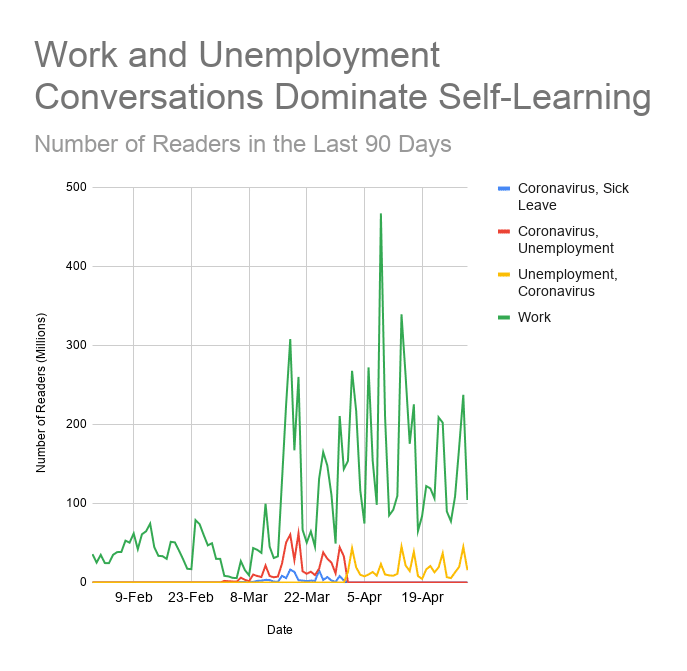
Advertisers looking to reach consumers that are interested in self-teaching themselves should look focus on bolstering skills for the remote workforce, and less on nice-to-have skills, which aren’t seeing such an increase:
- What courses, materials or products can you offer to prepare those recently unemployed for stepping into remote roles?
- Consider addressing hurdles to remote work such as lack of wi-fi or hardware in your marketing efforts, if relevant.
- Stay sensitive to the fact that those faced with unemployment might not be flush with cash, and only seek to provide what’s really valuable at this time.
Build Creatives that Align with Today’s Education Consumer
Trends in readership can guide you towards a theme for your next campaign, but when it comes to actually building those creatives—what will actually work?
Ads on publisher sites always include a headline and an image—they’re what you have to work with during your open opportunity to capture consumer’s attention.
Using the millions of ad creatives running through our network each week, we surface image and headline trends that increase advertiser CTR with Taboola Trends.
Whether you’re working to reach primary, higher or self-learning education consumers, stay away from animals, test men in your images, and pose your creatives outdoors.
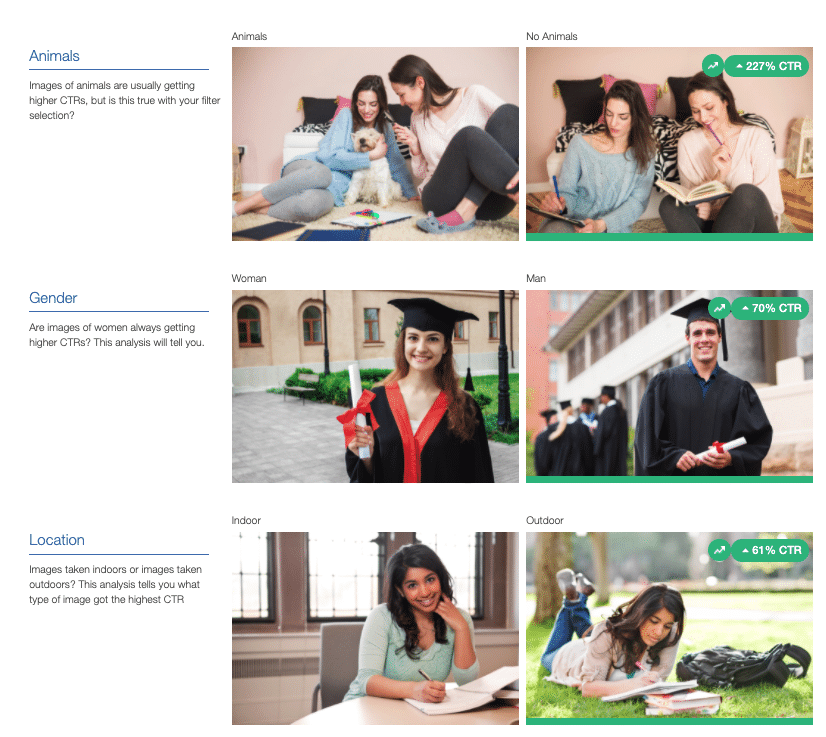
We’ve also got three sets of keywords for you below. The first are strong performers—they’re currently driving more clicks than most. The second is strong competition keywords—we’re starting to see some creative fatigue with these. And the final is opportunity keywords—they’re seeing strong performance and they aren’t being used much.
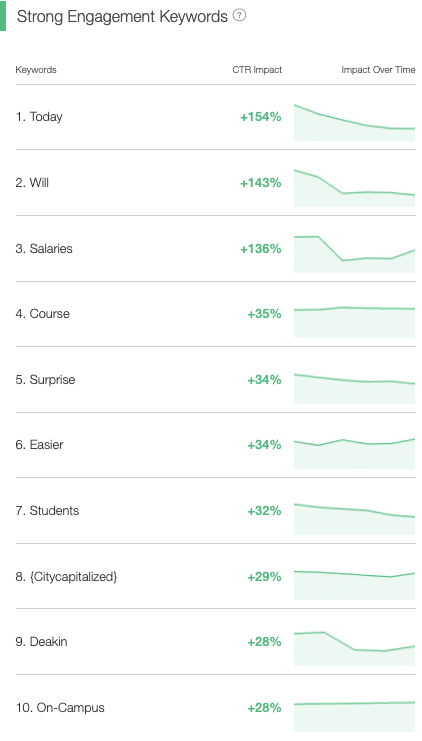
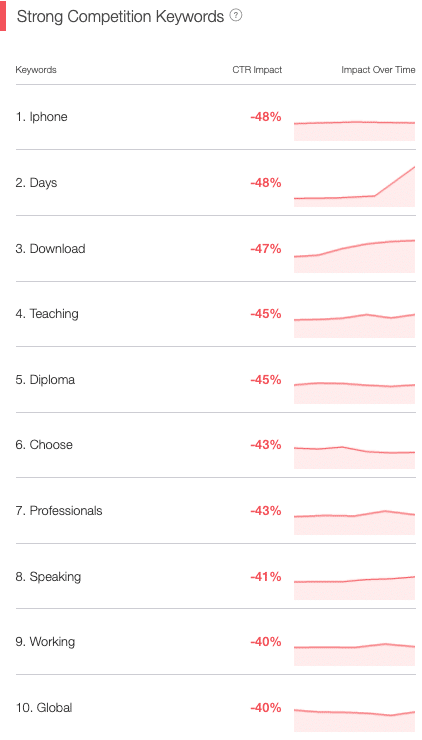
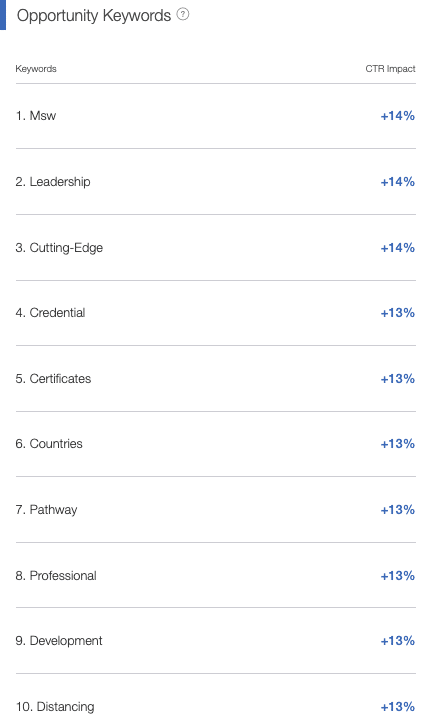
These keyword trends should help inform the headlines you write, in conjunction with the theme you’ve chosen based on the current attention of your specific education consumer audience.
Here are some example headlines to get those wheels turning:
- Unique Products to Help You Meet Social Distancing Guidelines on Campus
- Marketing Certificates Available After 1 Week Online Course
- Homeschool Resources for Parents of Special Education Students
- Accounting Salaries Skyrocket After Online Learning Seminar
- Professional Development Courses 50% Off For Two Weeks
- What do On-Campus Safety Restrictions Mean For Spring?
But you might not want to bank on just the headlines themselves. Our predictive title tool analyzes your headlines for their predictive CTR, and will rank them depending on which our algorithm thinks will be the top performer for you. Here’s how those example headlines stack up against one another:
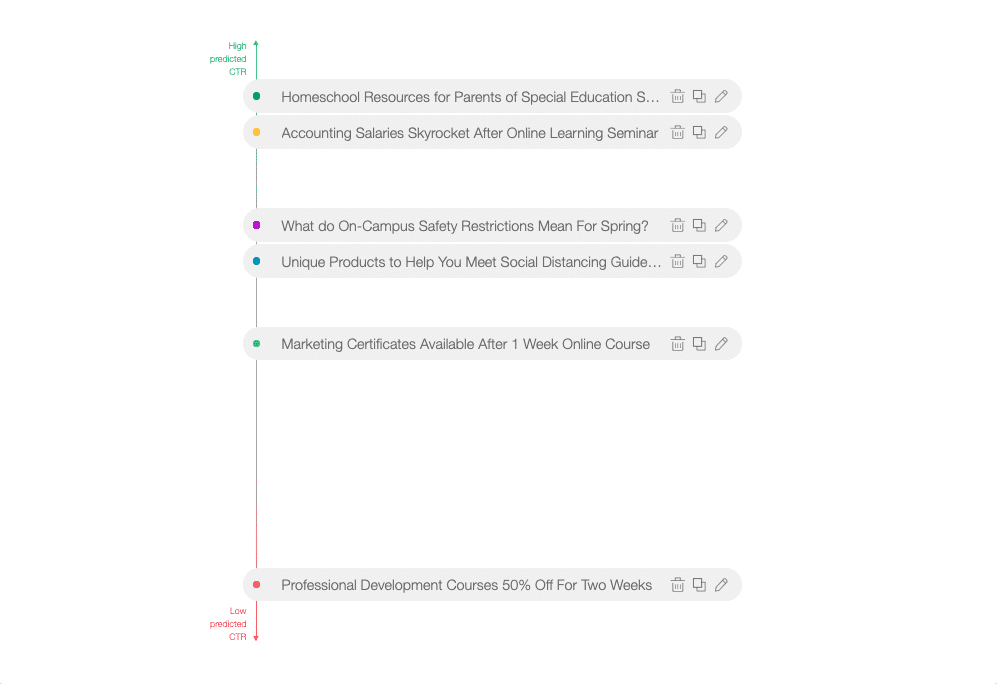
All that’s left is to combine those image and keyword insights to build creatives you can feel confident testing. Here’s what some of those creatives might look like, using our image trends and tested headlines:
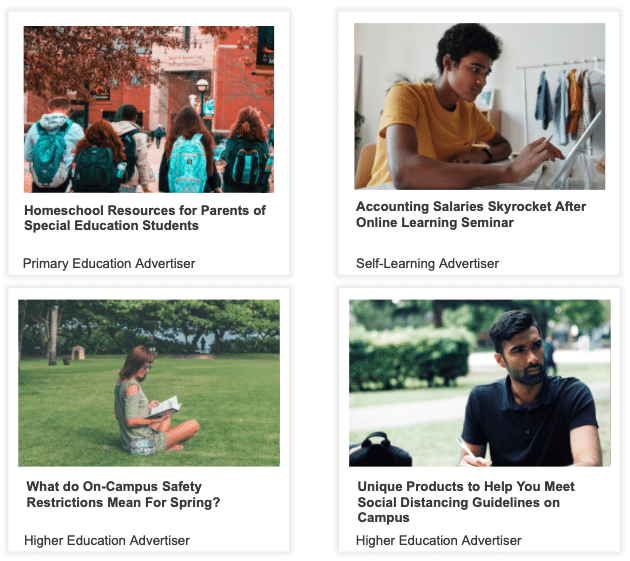
We recommend testing nine creatives with each campaign, and monitoring weekly to determine which creative performs the best. To build nine creatives easily, take three headlines and three images that you can mix and match to drive traffic to the same landing page.
Target Education Consumers at the Right Time, in the Right Place, with the Right Content
The world’s learning patterns are all over the map—now mostly home, education consumers are consuming content and responding to advertiser messages at different times and days then they were pre-pandemic.
In order to determine the best opportunities for advertisers when it comes to targeting, we take a two things into account: click-through-rate (CTR), or demand for content (if you’re clicking on content, we assume you want to see it), and spend % across our network, or supply of education-related content available to consumers. At times where there is a low supply of content, and high demand for that content, that’s the biggest opportunity for advertisers to capitalize on.
Formerly, weekends were best to reach consumers (when home from work and school), now that’s shifted to mid-week—Tuesdays and Thursdays specifically.
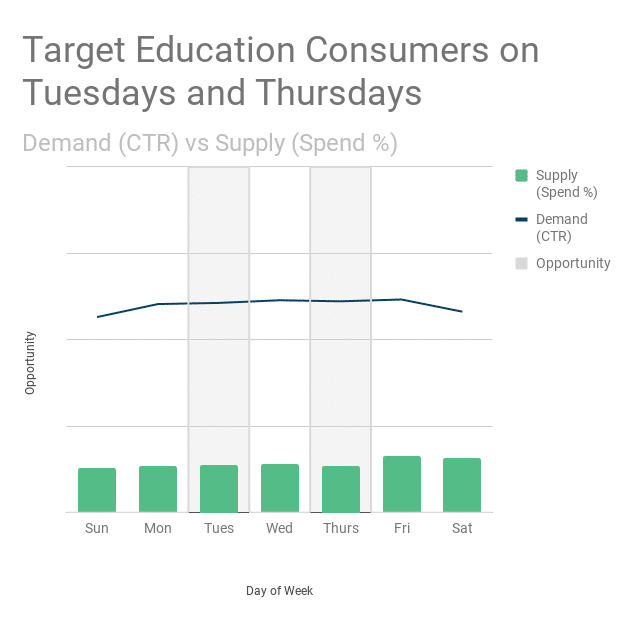
We’re starting to see more education consumers clicking in the morning hours, whereas previously a commute might have gotten in the way. Supply has yet to rise enough to meet that demand.

Education advertisers are sorely missing out on education consumers interacting with advertisements and content on tablet devices. CTRs there are higher there than on desktop and mobile devices at the moment, where most of the spend is allocated.
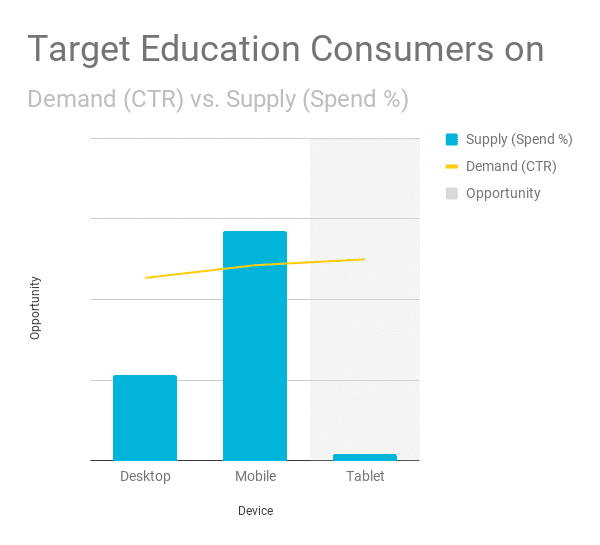
If you’re automatically equating text-based articles with the education-interested crowd, you shouldn’t. Photo galleries are a huge hit with them, and there’s room for improvement on the advertiser front to meet this demand.
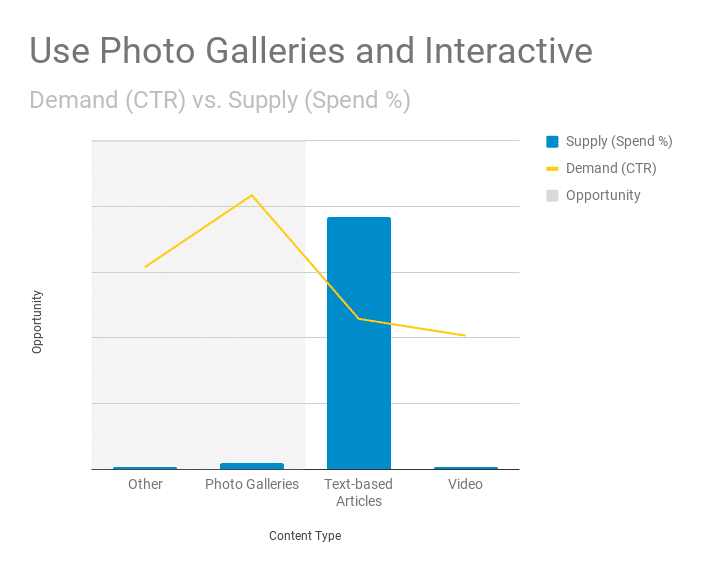
Once you’ve nailed the time, place and content type, find the right people by using relevant data segments. You can target people by their interests in academia, e-learning and education with segments likes these:
Example Data segments
- Interest > E-Learning
- Interest > Lifestyle > Education > Academia
- Interest > Online Behavior > Education Engagers
- Education > High School
- Education > Graduate School
- Education > Alumni and Reunions
- Creative Strategy
Maximize Your Bid
If you’re just starting out, we recommend bidding as high as you’re comfortable with for the first few days to a week, to capture as much traffic (and therefore data) as you can in order to determine how to target more effectively.
Here are some best practices you can follow:
- Pause every ad with low conversions if it’s served 300-500 clicks
- If your CPA is high, adjust your bid per site before blocking specific sites altogether
- Only bid down on a site entirely after delivering 500 clicks with no conversions
- Increase bids by 25%-50% for top-performing sites to increase their competitiveness
Our Smart Bid feature automatically bids for you based on your goals, allowing advertisers to rest assured their getting the best rate for each click.
Example Education Campaigns to Inspire
This group of advertisers have been successful with campaigns on publisher sites. Let’s break down their successes, and some strategies to take away.
Primary Education Example
Flintobox Increases Subscriptions to Educational Monthly Toy Box by 15%
Flintobox is a theme-based “discovery box” service that curates exploratory activities and games for young children, and delivers them to customer homes as a monthly subscription. They increased subscriptions by 15% using an educational-based messaged.

Higher Education Examples
Georgetown University Converts Interest Students on Publisher Sites
DMI ran both brand awareness and lead generation campaigns for Georgetown University, a strategy that evolved as Georgetown University sponsored content campaigns performed well throughout the consumer funnel.
They used both thought leadership and content related directly to their programs to ultimately convert consumers.
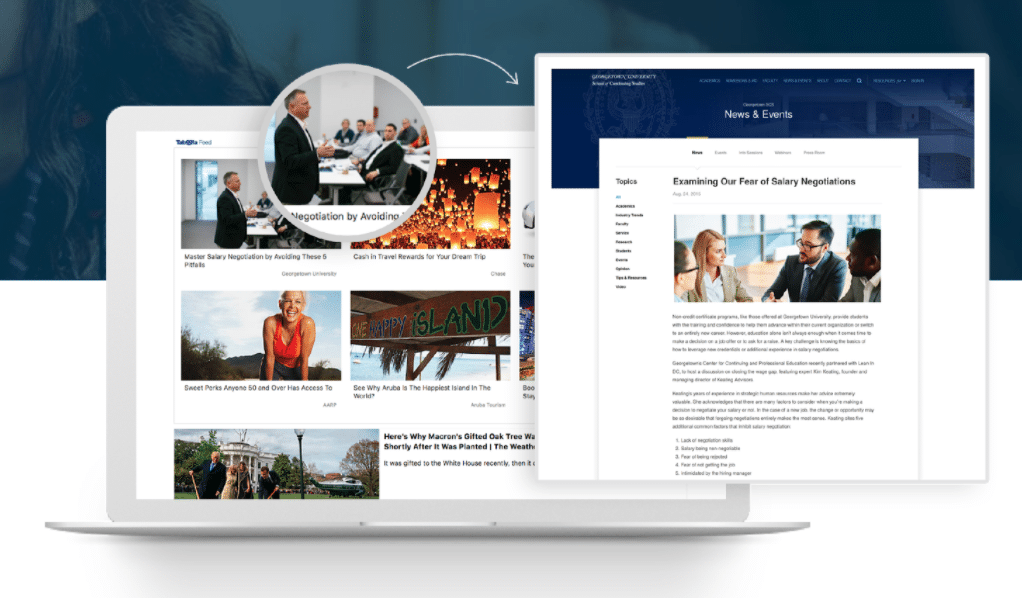
Non-profit University of the People Drives Applications by Marketing Courses on Publisher Sites
University of the People (UoPeople) is the first non-profit, tuition-free, American-accredited online university. UoPeople’s sponsored content campaigns include assets like recent news coverage, as well as program pages on their website that detail different options for students. The university’s earned media coverage helped it drive readers who it could then retarget with program pages to drive leads.

Self-Learning Examples
Talentedge Increased Registrations to Professional Development Courses by 10-15%
Talentedge is a live and interactive digital learning platform, with 50 courses from 20 premier organizations worldwide. Using editorial content on their blog, they were able to get their value proposition across to potential consumers more effectively.

Blinkist Drives 600,000 Sign-Ups
This app provides nonfiction content in snackable bites to people who are interested in learning the basics of various concepts. Blinkist needed a little more room for storytelling when it came to reaching customers—here’s how they did it.
Basic Bananas Increases Course Registrations by 20%
Basic Bananas is a global marketing education organization that supports small business owners in understanding how to grow their businesses through effective marketing. Editorial content offered business owners a taste of the value of Basic Banana’s workshops – such as branding insights or information on creating a marketing plan. Visitors are then invited to join one of the company’s workshops.

Conclusion: Successful Education Advertising Needs Empathy
Education as a broader subject is on the minds of many—whether it be a parent looking to home school, a student of higher education wondering what will be made of their campus, or an adult in the workforce looking to bolster their skills.
The key to successfully reaching those consumers is founded in being empathetic to their current challenges, desires and needs.